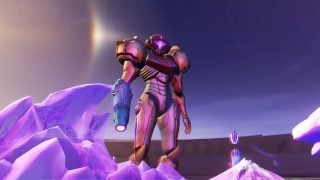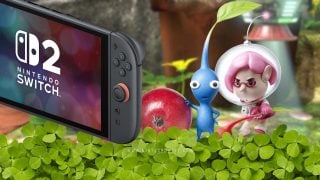Welcome to the final chapter of the Zelda look-back series! We’ve taken a trip down memory lane and revisited some great games over the weeks, but now we are approaching the final stop with The Legend of Zelda: A Link Between Worlds.
The 3DS title was released back in November of 2013, which, when you think about it, wasn’t that long ago. As somewhat of a spiritual successor to A Link to the Past, this game was a return to a more traditional Zelda style of gameplay with the top-down perspective. This brought with it old, or shall we say classic, mechanics as well as some brand new ones, with one in particular being used for navigating your way around the world and solving puzzles: becoming a painting.

Becoming One with Art
In A Link Between Worlds (ALBW), Link becomes one with art and is able to transform himself into a painting when facing a wall. Link was originally bestowed this ability (accidentally) by the main villain of the game, Yuga. The hero would have been imprisoned to a wall for all eternity if not for the bracelet that Ravio, a merchant that makes himself home at Link’s house, gave him. This little accident on the part of the villain comes in handy, as being able to become a flat painting adds another layer to puzzle solving and exploration.
Instead of just using the newest item that you’ve obtained to solve a dungeon’s puzzles, you have to factor in this new painterly skill into your approach. Can’t find any reasonable way to get across a pit? No problem! Just turn to the wall, transform into a painting and shimmy your way across! It isn’t just the way you navigate dungeons either, with it coming in handy when navigating the overworld of the game as well.

The painting mechanic at face value seems fittingly one-dimensional. After a while of playing the game the novelty wears off, and it just becomes another part of the game; you almost forget about it for a while. That all changes when you reach the point in the game where you discover Lorule, a dark alternate version of Hyrule, and you have to turn into a painting to travel between the two worlds (hence the name, “A Link Between Worlds”).
I think this introduction of dual worlds is where the painting concept truly shines. Large chunks of Lorule are inaccessible, meaning you have to traverse the right areas of Hyrule, transforming into a painting and shimmying your way into a new area through a transdimensional crack. I personally found that this made the game more interesting and challenging, and to the developers credit it’s something that I personally have never seen in any other game before.
An Open World Between Worlds
With A Link Between Worlds, The Legend of Zelda takes a swing at the open world genre. Unlike past Zelda titles such as Ocarina of Time, Twilight Princess and Skyward Sword, which were structured in a more linear fashion in comparison, in ALBW you are essentially thrown into the world with a map and an objective, which you can approach in any way that you please.
Typically in a more linear Zelda game, the newest item that you had found would be the catalyst for solving the upcoming dungeon. In ALBW Ravio will let you rent all of the items that you can afford early on in the game. For example, If you’ve bought all of the items from Ravio before going off to clear the dungeons, you could clear them in any order of your choosing as you wouldn’t have to worry about having the right item for the job. As opposed to a game like Twilight Princess, where you would typically be given access to one new item and one new dungeon at a time throughout the course of the game.

I thought that this was a much better approach since it allowed the player to explore the entire game space and decide which challenges they want to tackle first. This open ended approach leads to players all having their own unique experiences with the game. With a more linear game, everyone walks down the same path to get from point “A” to point “B”. Even though point “A” and point “B” will still be the same for every player in a more open game like ALBW, the journey between the two will be what’s different.
A Link to Breath of the Wild
It’s fitting that we would end the Zelda Look-Back series with a game like A Link Between Worlds. If you really think about it, the 3DS entry was Nintendo’s way of testing out the open world formula. Breath of the Wild is looking to be Nintendo’s, and what just might be the whole of gaming’s, biggest and most ambitious open world game to date, so it makes sense that the company would test it out on a smaller scale before diving straight into it.
Ideas that really knocked it out of the park with fans, like being able to tackle the dungeons in any order that you please, have already been confirmed to be a key component to Breath of the Wild, although you probably shouldn’t expect to be transforming into a painting this time around.
With that said, we’ll see you when you wake up in Hyrule for a brand new adventure this Friday!
This article is part of our new Zelda look-back series running up to the release of Breath of the Wild.
Leave a Comment

